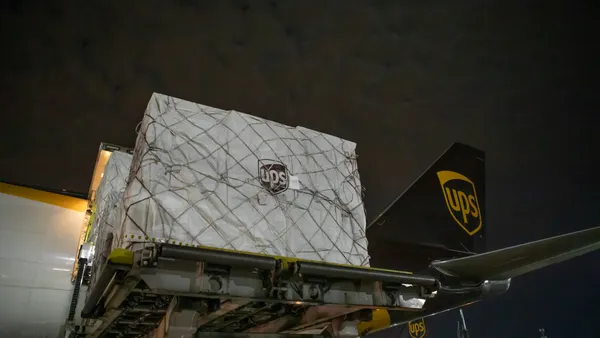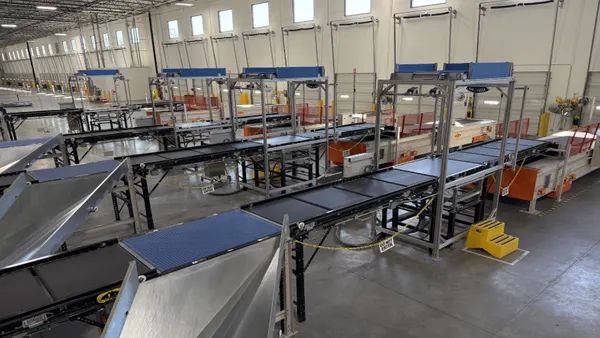China's coastal cities are booming with shipping and manufacturing, but there's a problem — they're running low on space, pushing some manufacturing and logistics hubs to nearby satellite cities and to that big land mass with people and plenty of area for development: The interior.
These inland cities serve as land bridges between eastern and western China, and between western China and Europe or Russia. But mostly, their growth serves their own population, as China consumes more goods domestically.
"The development of Grade A warehouses and modern transport infrastructure is dramatically upgrading [inland] cities' role in China's overall logistics system and positioning them to grow as major distribution hubs going forward," Joe Zhou, regional director and head of research for China at JLL, a commercial real estate advisory company focusing on warehouses and their supply chains customers, told Supply Chain Dive.
3 top emerging inland Chinese hubs
-
Zhengzhou
The capital city of the Henan province is closely associated with Foxconn, which has manufactured and exported about half the world's Apple iPhones since 2010. It was China's first economic zone built around an airport and thought to be one of China's fastest growing airports for cargo and passengers. The Henan province is expected to increase the number of international air freight lines to 40 by 2020, up from 29 in 2016.
In 2017, four cargo trains began weekly service between Zhengzhou and Hamburg, Germany, though trains have been running between the cities less frequently since 2013, shuttling $2.82 billion in goods to Germany in that time. The Zhengzhou to Europe rail route accounts for about 30% of total rail volume for all Chinese rail routes to Europe, with cargo including electronics, industrial robotics and automobile parts.
-
Chengdu
This large city in southwestern China's Sichuan province is increasing rail and air service as well, while trying to attract high growth tech companies. In May, DHL Global Forwarding, along with the Rail Cargo Group, announced they were extending Vienna to China rail connections to Chengdu. DHL will offer door-to-door services for high value exports.
Lufthansa Cargo also started a new freighter operation there in May, with two round trip freighter flights weekly between Chengdu and Frankfurt. DHL's goal is to serve western China, and this is their first foray into a Chinese inland city with no port access. These rail containers are part of a multimodal network with remotely monitored temperature control and tracking, and fully managed customs clearance and consolidation.
-
Xi'an
Xi'an, in the middle of central China, opened a logistics park in 2008, with a free trade zone dry port and a rail link to western Europe.
"Xi'an is/has been one of the most attractive national center cities in China for traditional manufacturing and logistics industries," Jiang Wu, Xi'an general manager of GLP, a logistics property developer, told Supply Chain Dive. "To be the next big logistics center, it has a long way to go, because the industrial base is not yet mature enough, meaning high-tech industries have not yet set up shop in Xi'an on a larger scale."
However, it is an extremely attractive location for R&D centers, with increasing numbers of manufacturers, e-commerce companies and their logistics suppliers planning to invest there, he said, and that's generating more demand for Grade A warehouses.
In the past five years, GLP saw prime warehouse space demand double to 2.6 million square meters due to warehouse reorganization. The company currently has five logistics parks and is planning to develop two more in the greater Xi'an area.
Growing pains in inland logistics hubs
While higher real estate and labor costs on the coasts make inland growth attractive, the interior cities suffer from trained talent shortages, inconsistent infrastructure, regulatory limitations across geographies, fragmented distribution systems and underusage of technology in some regions, according to a PwC Hong Kong report.
China has more than 700,000 registered logistics companies, but they don't provide comprehensive service domestically because of localized regulations. Logistics providers don't usually serve coastal Chinese cities and the interior Chinese cities, making visibility difficult as cargo moves from area to area.
Part of the growth process is building up transportation infrastructure. Ocean freight is the cheapest way to move cargo (and most manufacturing is done in the coastal Chinese areas). The midrange alternative is rail, which doesn't hold as many goods, and air freight, with higher cost but faster delivery.
Transportation of goods between China and Europe in 2016
| Transportation | Trade by volume | Trade by value |
|---|---|---|
| Ocean | 94% | 64% |
| Air | 1.8% | 28% |
| Rail | 0.9% | 2% |
| Road | 3% | 6% |
Center for Strategic & International Studies
Currently government rail subsidies are helping to promote that growth, but some are concerned about what will happen should the government decrease or cut the subsidies completely. Compared to ocean and air freight data, access to basic rail lines information like rates, volume and even route frequency is difficult, making rail use more complex.
E-commerce is taking over warehouse space
While road transportation makes up a much smaller volume of trade, inland cities sit at the center of strong highway networks connecting dozens of small and medium size cities. "All of these cities are focal points of economic development in central and western China," Zhou said. They're drawing developers and tenants looking to build out regional warehouse and distribution networks.
As China's largest prime warehouse developer, GLP's data of leased area by tenant type is considered representative of the Chinese market as a whole. In its 2016 annual report, GLP indicated 90% of their warehouses were stocked by businesses serving the domestic market. E-commerce is growing in China as well, with such orders taking up 26% of GLP's warehouse space in 2016, compared to 3% in 2009.
GLP plans to remove more than half of their lower quality warehouses in the outskirts of Xi'an, in the West Third Ring Expressway area, to make room for commercial and residential developments. With the city expanding, "We believe that demand for high-end warehouse facilities will continue to grow," said Wu.
As demand for high quality warehousing grows, however, much of the older, less functional warehouses sit empty. "Experience shows that these cases of vacancy are resolved over time as demand for modern warehouse space continues to expand," Zhou said.













